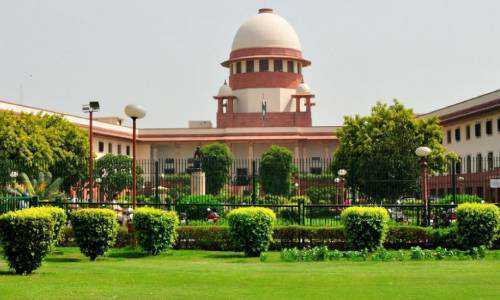
The Supreme Court established the law regarding the applicability of Article 137 of the Limitation Act, 1963 upon transfer of winding up petitions to the National Company Law Tribunal (NCLT) under the Insolvency and Bankruptcy (Application to Adjudicating Authority) Rules, 2016 while the pendency of a civil suit in a decision rendered by a three-judge bench in Jignesh Shah & Anr. v. Union of India. The judgement, written by Nariman J., overruled the National Company Law Appellate Tribunal's (NCLAT) ruling and stated that the day of the default would constitute the cause of action to begin winding up proceedings and that the limitation period would begin to run on that day. During this time, a civil lawsuit would be ineffective.
In the instant case titled Jignesh shah & anr. v. Union of India & Anr. The issue raised for clarification before the Supreme Court was:
Whether the object of Section 238A is to give a new time lease?
When does the limitation period begin for an existing civil suit?
With regard to the first issue, In B.K. Educational Services v. Parag Gupta and Associates, the court reiterated that the purpose of the Code, and in particular section 238A, is not to resurrect time-barred debts. The Limitation Act would apply to the procedures requested to be launched under the Code, the court ruled in favour of the petitioner. It is crucial to ascertain if the winding up petition that was subsequently transferred to NCLT was itself time-barred.
With regard to the second issue, the ruling establishes the rule on whether an ongoing civil lawsuit increases the time limit for bringing a winding up petition as well as when it begins to run. Winding up proceedings are governed by Article 137 of the Limitation Act, which specifies a three-year limitation period for all residuary proceedings that are not covered by the other articles. The High Court opinions as well as pertinent rulings from American courts were thoroughly considered by the Court.
The Court categorically stated that,
"The aforesaid judgments correctly hold that a suit for recovery based upon a cause of action that is within limitation cannot in any manner impact the separate and independent remedy of a winding up proceeding. In law, when time begins to run, it can only be extended in the manner provided in the Limitation Act. For example, an acknowledgement of liability under Section 18 of the Limitation Act would certainly extend the limitation period, but a suit for recovery, which is a separate and independent proceeding distinct from the remedy of winding up would, in no manner, impact the limitation within which the winding up proceeding is to be filed, by somehow keeping the debt alive for the purpose of the winding up proceeding".
The Court also addressed the issue of when the real cause of action for starting a winding-up suit arises in order to address the issues at hand. The respondent argued that a winding up petition could not have been filed earlier because it was only in 2016 that the company's substratum, or the value of its assets, decreased from rupees 1,000 crores to rupees 200 crores. However, the court rejected this claim. The Court stated that the trigger occurs when a default occurs, after which the debt stays unpaid and continues unpaid, holding that the cause of action starts on the date of default. It is this date alone that is significant for the purpose of triggering limitations for the filing of a suit.

